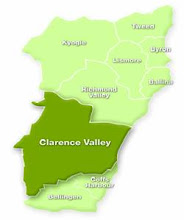Press Advisory
May 19,
The American Academy Of Environmental Medicine Calls For
Immediate Moratorium On Genetically Modified Foods
Wichita, KS - The American Academy of Environmental Medicine (AAEM) today released its position paper on Genetically Modified foods stating that "GM foods pose a serious health risk" and calling for a moratorium on GM foods. Citing several animal studies, the AAEM concludes "there is more than a casual association between GM foods and adverse health effects" and that "GM foods pose a serious health risk in the areas of toxicology, allergy and immune function, reproductive health, and metabolic, physiologic and genetic health."
The AAEM calls for:
- A moratorium on GM food, implementation of immediate long term safety testing and labeling of GM food.
- Physicians to educate their patients, the medical community and the public to avoid GM foods.
- Physicians to consider the role of GM foods in their patients' disease processes.
- More independent long term scientific studies to begin gathering data to investigate the role of GM foods on human health.
"Multiple animal studies have shown that GM foods cause damage to various organ systems in the body. With this mounting evidence, it is imperative to have a moratorium on GM foods for the safety of our patients' and the public's health," said Dr. Amy Dean, PR chair and Board Member of AAEM.
"Physicians are probably seeing the effects in their patients, but need to know how to ask the right questions," said Dr. Jennifer Armstrong, President of AAEM. "The most common foods in North America which are consumed that are GMO are corn, soy, canola, and cottonseed oil."
The AAEM's position paper on Genetically Modified foods can be found at http:aaemonline.org/gmopost.html.
AAEM is an international association of physicians and other professionals dedicated to addressing the clinical aspects of environmental health. More information is available at www.aaemonline.org.
-more-
About AAEM The American Academy of Environmental Medicine was founded in 1965, and is an international association of physicians and other professionals interested in the clinical aspects of humans and their environment. The Academy is interested in expanding the knowledge of interactions between human individuals and their environment, as these may be demonstrated to be reflected in their total health. The AAEM provides research and education in the recognition, treatment and prevention of illnesses induced by exposures to biological and chemical agents encountered in air, food and water. ###
 I was in awe of ABC North Coast Radio this week.
I was in awe of ABC North Coast Radio this week.




